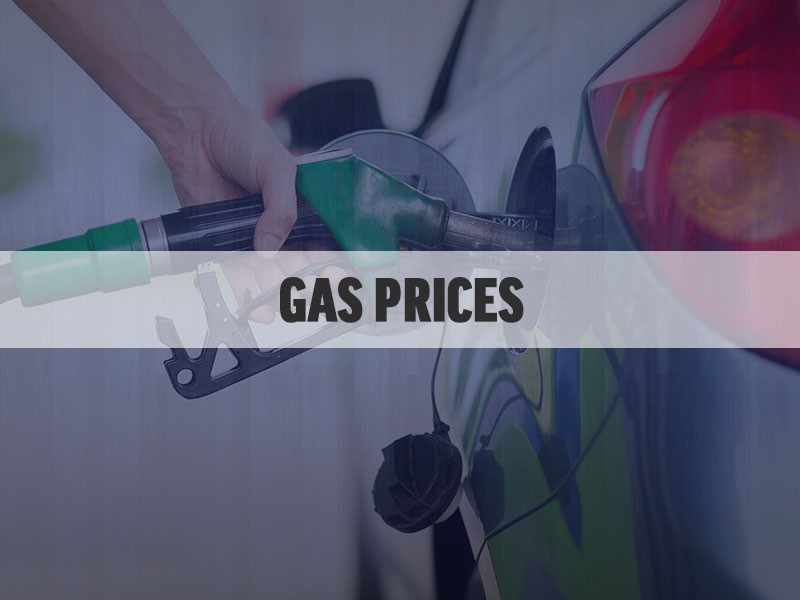TAMPA, Fla. - AAA issued its monthly fuel report for April on Friday afternoon. While prices remain below $3 per gallon across most of the country, American drivers paid the highest gas prices of the year in the month of April.
The findings of the report are as follows:
Average U.S. Gas Price Climbs 55 Cents since January
- Thursday's national average price for gas was $2.58 per gallon - the highest average so far this year. Average U.S. gas prices are up 55 cents per gallon since reaching a low of $2.03 per gallon in late January, making this the largest seasonal increase in gas prices since 2012.
- “Gas prices have climbed to the highest levels of the year due largely to rising crude oil costs,” said Mark Jenkins, spokesman, AAA - The Auto Club Group. “As prices keep climbing, it getting more difficult to believe that gas was below $2 per gallon at the majority of stations earlier this year.”
- The national average price of gas has increased 16 days in a row for a total of 19 cents per gallon. The cost of crude oil has increased by more than $15 per barrel since reaching a six-year low in the middle of March. Thursday's national average price of gas is the most expensive since Dec. 12, 2014.
- Gas prices this year have increased at the largest seasonal rate since 2012, when the national average increased by 66 per gallon during the spring. U.S. average prices increased by 43 cents per gallon in spring 2014 and 50 cents in 2013. It is common for gas prices to rise in late winter and early spring as refineries conduct seasonal maintenance, which can limit gasoline production.
- Despite recent price increases, the average price of gas in April was $2.44 per gallon, which was the lowest average for the month since 2009. By comparison, the average price of gas in April 2014 was about $1.20 per gallon more expensive at $3.64 per gallon.
- Gas prices on the West Coast continue to be the highest in the nation due to regional refinery problems and relatively tight fuel supplies. California’s average has been the most expensive in the country since Feb. 26, when California’s average climbed above Hawaii for the first time since October 2012. California’s prices began to jump in February following an explosion at the ExxonMobil refinery in Torrance, Calif., which has limited fuel production. The refinery reportedly will not complete repairs until July, which means the region likely will continue paying among the highest prices in the country for the next few months.
-
Crude Oil Steers Gas Prices
- Gasoline costs less than in recent years because of significantly lower crude oil costs. Despite recent increases, crude oil remains about $50 per barrel cheaper than the highs reached in summer 2014. Crude oil prices dropped during the second half of last year largely due to abundant global supplies and production.
- Crude oil prices have increased in recent weeks as the market considers a possible slowdown in domestic oil production. A reduction in growth could signal that the market is rebalancing supply and demand in response to relatively low prices this year. In addition, continued conflict, in places such as Yemen and Iraq, adds increased risk and uncertainty that can lead to higher prices.
-
Drivers Should Still Pay Lowest Summer Gas Prices in at Least Five Years
- Despite recent price increases, drivers should still pay the lowest gas prices for the summer driving season in at least five years, and it is even possible that gas prices will reach the lowest summertime levels in a decade if the cost of crude oil drops again.
- “We could see record summer travel because the economy is stronger and gas prices are much cheaper than in recent years,” continued Jenkins. “Lower gas prices will make travel more affordable and this may motivate Americans to take a summer road trip.”
- About 6 in 10 Americans say they are more likely to take a road trip of 50 miles or more in 2015 if gas prices remain near recent levels, according to a new AAA survey. Oil supplies are at record levels and refineries have increased production capacity in recent years, which means there should be enough fuel to meet an increase in travel demand this summer.
- AAA does not expect the national average price of gas to rise above $3 per gallon this summer, but it is unclear whether consumers will pay more or less in the coming months.
- There are a number of factors that could send summertime gas prices even higher. Oil prices have rallied significantly in recent weeks and market momentum could send prices higher, especially if domestic production slows further or if fighting escalates in the Middle East. Refineries also could face unexpected problems, which could lead to regional price spikes.
- It also is possible that gas prices could soon drop because there is a glut of petroleum in the country. Domestic oil production remains about 14 percent higher than a year ago, U.S. commercial crude oil supplies are about 23 percent higher than last year, while gasoline supplies are about eight percent more abundant. Gasoline supplies could grow even larger heading into the summer as refineries complete seasonal maintenance.
- In a typical year, gas prices peak by early May as refineries end seasonal maintenance and increase production for the busy summer driving season. Gas prices often drop through late June before rising again as millions of Americans hit the road for peak summer travel in July and August.
- The summer driving season is traditionally from Memorial Day through Labor Day. Last summer during this period, gas prices averaged $3.58 per gallon.
-
U.S. Households Have Spent About $400 Less on Gasoline So Far this Year
- AAA estimates that U.S. households have spent about $400 less on gasoline due to lower prices so far this year, in comparison to the same period in 2014.
- Paying more than $3 for gas remains relatively rare outside of the West Coast. About 92 percent of U.S. stations are still selling gas for less than $3 per gallon. A year ago, 99.99 percent of stations were selling gas above that price.
- The most common price in the country is $2.399 per gallon, which compares to $3.499 per gallon a year ago.
- The five states with the highest average prices include: California ($3.53), Hawaii ($3.13), Alaska ($3.07), Nevada ($3.04), and Oregon ($2.86). The five states with the lowest average prices include: South Carolina ($2.31), Oklahoma ($2.34), Missouri ($2.34), Louisiana ($2.35) and Kansas ($2.36).









